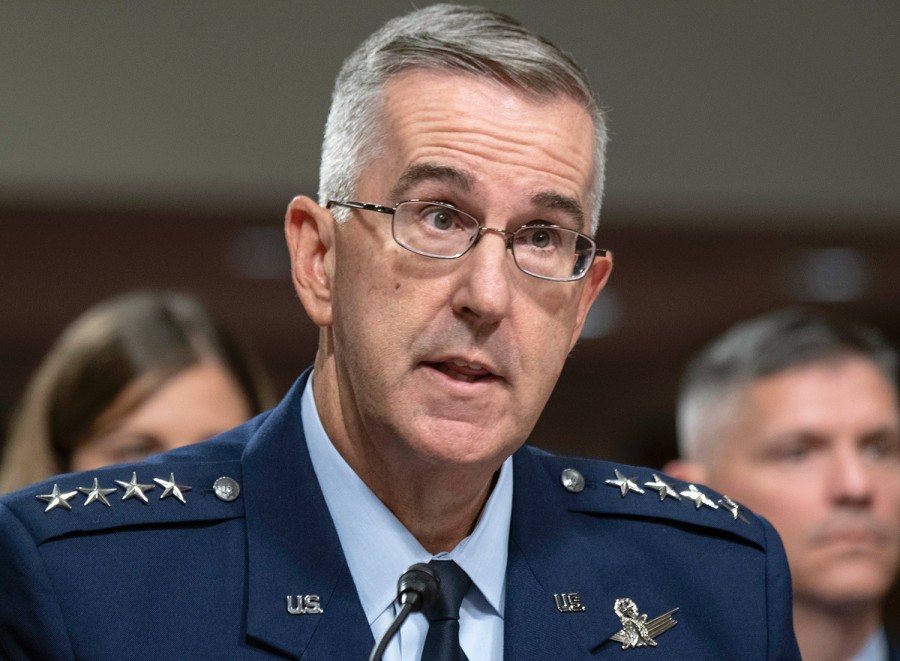
Gen. John Hyten
WASHINGTON: The Joint Requirements Oversight Council will give the services new marching orders by month’s end to ensure that future weapon systems support All-Domain Operations, Vice Chairman of the Joint Chiefs of Staff Gen. John Hyten said today.
A likely assumption, therefore, is that the long-awaited Joint Warfighting Concept (JWC) itself also will be published at the end of the month.
Those JROC-crafted “strategic directives” embody “broad requirements” that will serve to “define the future” in each of the four JWC sub-concepts, Hyten told the annual McAleese conference today. Those are: joint fires, command and control (C2), contested logistics and ‘information advantage.
The goal is to speed the process as the military gears up for globalized automated battle with Russia and China, he said. “By doing that, we believe we will help enable the services to move fast,” he said, because the joint requirements will be defined up front. Having well defined joint requirements will eliminate the need for the services to jerry-rig incompatible systems built to service-specific requirements to create interoperability, he explained.
Hyten has been working on redefining the role of the JROC, which he chairs, for more than a year, in large part to speed the development, acquisition and fielding of new capabilities for all-domain ops. He also has played a critical role in defining this new American way of war.
Perhaps the most important requirement included in the new JROC “strategic directives” will be a hard and fast rule that all future weapon systems be based on open data standards that guarantee DoD access, Hyten elaborated. “One of the requirements is going to be that all data developed and produced by every weapon system we have has to be made accessible, period,” he said.
Vendor lock has been the bane of all of the services as they maintain and update old equipment, from simple radios to high-end fighter jets. It also is a primary driver of interoperability problems that stymie real-time command, control and communications (C3) by commanders — the classic example being the Air Force F-22 and F-35 fighter jets that have incompatible radio systems despite both being made by Lockheed Martin. Hence the importance Combatant Commanders are placing on building a meta-network for Joint All Domain Command and Control (JADC2).
The ability to share data is not only “essential to enable the joint force,” Hyten said, but also is key to better integrating allies and partners into US military operations. “With the right kind of security architecture over the top,” he explained, “it’ll also allow US allies and partners to look into the same common database.” And working with allies will be critical to winning on tomorrow’s battlefield, he stressed.
“Allies and partners are, I think, our greatest advantage in the world, because we have so many and our competitors in the world have so few,” Hyten said. “And so the more we can leverage allies and partners, the stronger we are as a nation and stronger we all are as an Alliance and as partners.”
Hyten elaborated truly integrating allies in the JWC and future machine-speed warfare cannot simply rely on the old pattern of telling allies they have to “buy this box and put it in that plane and that way we can talk.” Instead, it requires up-front integration of allied capabilities into US command, control and communications networks and vice versa — thus the need for accessible data and standard data interfaces.
“And when that happens, I think magic’s gonna happen,” he said.






















